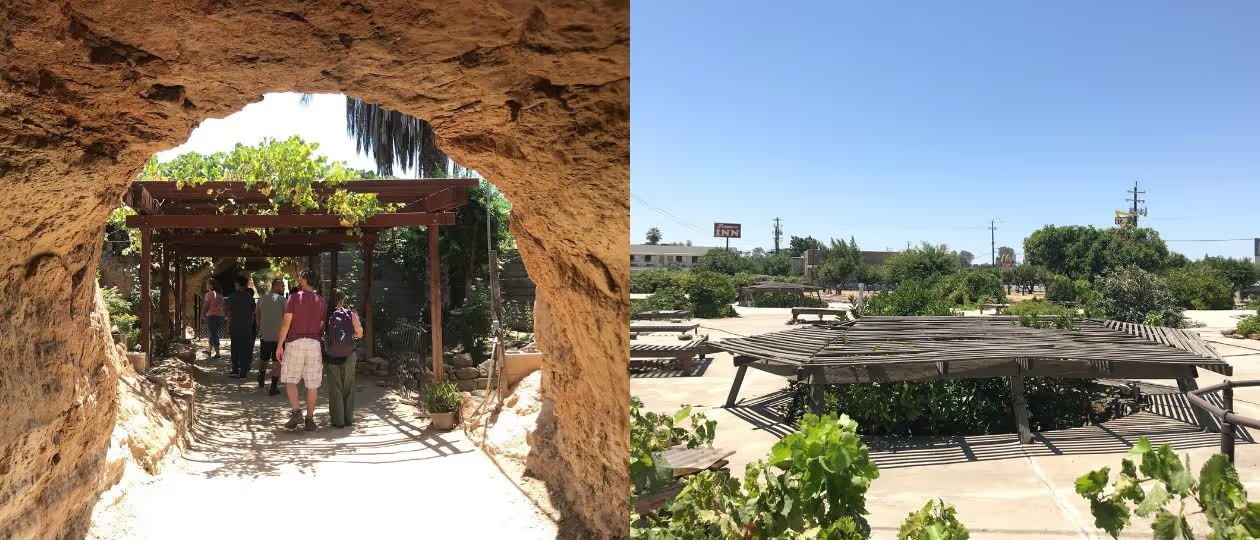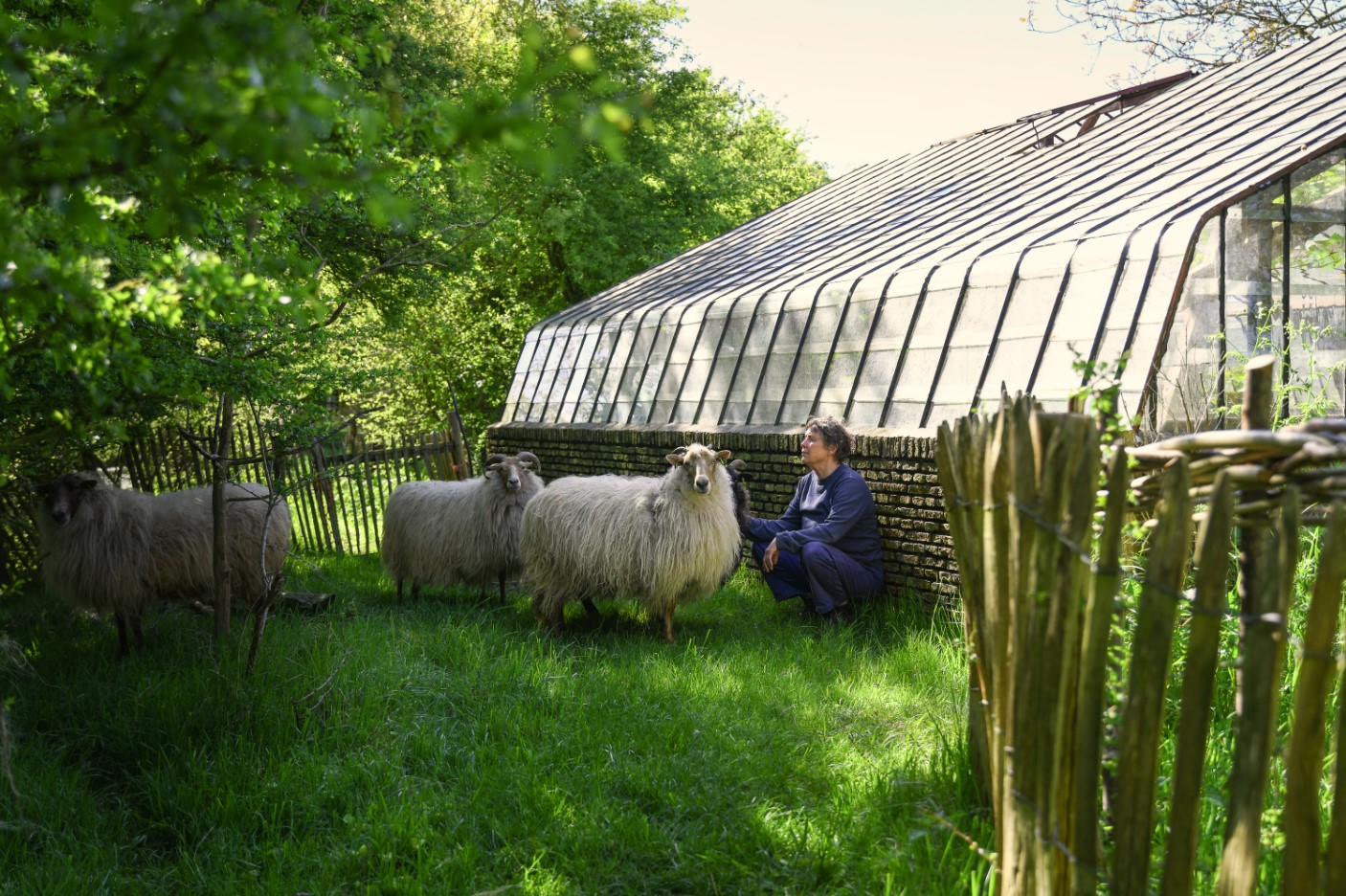Author and photo: Valérie Záhonová
On the surface, the area around Forestiere Underground Gardens does not seem remarkable. It would be far-fetched to imagine that this is where one would find an original product of human ingenuity and hard work. Descending a set of stairs leading about five metres below ground level reveals a web of vaulted rooms and an underground kingdom of citrus trees – a world that Baldassare Forestiere spent forty years building.
Baldassare Forestiere came to the United States in 1901. After spending a brief period on the East Coast, he went westward to start his own citrus-growing business, purchasing land in Fresno, California, to do so. However, he soon learned that underneath a thin layer of fertile soil lay hardpan, a dense soil layer that is impervious to water and root systems (hardpan is typical for the Fresno area, but the layer on Forestiere’s land was unusually thick).
While Forestiere was realizing that he had spent all his money buying land that was unsuitable for growing citrus trees, the area was hit by a record-breaking heat wave. The Central Valley experiences high temperatures every summer, but in the summer of 1905, the mercury reached nearly 47°C in Fresno – a record that still stands. The following year, Forestiere began digging a cellar on the land he had purchased to escape the heat. After toiling away all day on the farm, he worked on his underground sanctuary in the evenings. He might have been inspired by the wine cellars of his native Sicily, which offered cool shelter from the summer sun, or possibly by the early Christian catacombs in Rome, where he had stayed before sailing for the United States.
Over the years, the single underground room slowly expanded. Forestiere built everything himself, without machines or dynamite, solely using simple tools and at minimal expense. In some areas, the hardpan was so dense that he simply chiselled it away. In other areas, he cut the hardpan into small blocks, which he then used to build arches, supports, and walls—saving himself the expense of stone and brick. Whatever he dug away from one area was used elsewhere. Underneath the nearly two-metre layer of hardpan, he discovered better quality soil, and by the 1910s, he planted his first trees in the underground space to see whether it was suitable for growing citrus. The soil looked promising. Inside, the keyholes provided the saplings with plenty of light while they remained protected against the harsh sun and winter frosts.

Keyhole skylights for trees.
Forestiere continued testing. He built a water tank, underground courtyards, and citrus tree containers; he experimented with tree placements, skylight sizes, and cellar depths. To stagger and extend the length of the harvest, he used several different ground levels and varieties of trees. He planted citrus trees, berries, and a variety of exotic fruits such as kumquats, loquats, and jujubes, also known as Chinese dates or red dates. After twenty years, he was able to sell his fruits and make a living from his efforts.
Forestiere Underground Gardens is now three levels deep, at three, six, and seven metres below ground. The temperatures down here range from five to eight degrees Celsius cooler than up at the surface. Conical skylights not only bring in daylight, but they also push the hot air out more quickly. Forestiere designed pathways and rooms with various widths to help direct the flow of air. Over time, Forestiere’s underground home and garden grew. A summer and winter bedroom, bath, kitchen, living room with a wood stove, countless caves, and courtyards for growing fruit trees were added. He also built a chapel and a small fishpond, under which is a room with a glass ceiling for watching the fish above.

Left: View of a bedroom / Right: Bath
Perhaps unsurprisingly, it dawned on the builder to open up his unusual home to visitors and turn it into a resort. As part of the plan, he dug out a tunnel so visitors could arrive comfortably in their cars. A relatively early adopter of the automobile himself, he saw cars as having great potential. Then he began work on an underground ballroom which would host weddings and soirées. Unfortunately, time ran out on him. He passed away at sixty-seven and his brother, Giuseppe, completed the ballroom. Baldassare Forestiere died childless.
Over the course of forty years, through a process of trial and error, Baldassare Forestiere created more than sixty rooms across a four-hectare plot – all without blueprints or formal construction training. Due to the favourable conditions which protect the garden from heat and frost, several of the trees planted by Forestiere a century ago continue to thrive; citrus trees in the Central Valley tend to live only half as long. Forestiere Underground Gardens became a California Registered Historical Landmark in 1978 and are managed by Baldassare Forestiere's relatives. The site is open to the public for guided tours.
As you conclude the tour and read Forestiere’s quote in the ballroom – “To make something with a lot of money, that is easy, but to make something out of nothing – that now is really something” – you are struck by the notion that the greatest impediment to human achievement tends not to be ill fortune, but rather our own strength of will.

Left: Part of the tunnel for cars / Right: Forestiere Underground Gardens on the surface




%20(2)%20kopie.jpg)